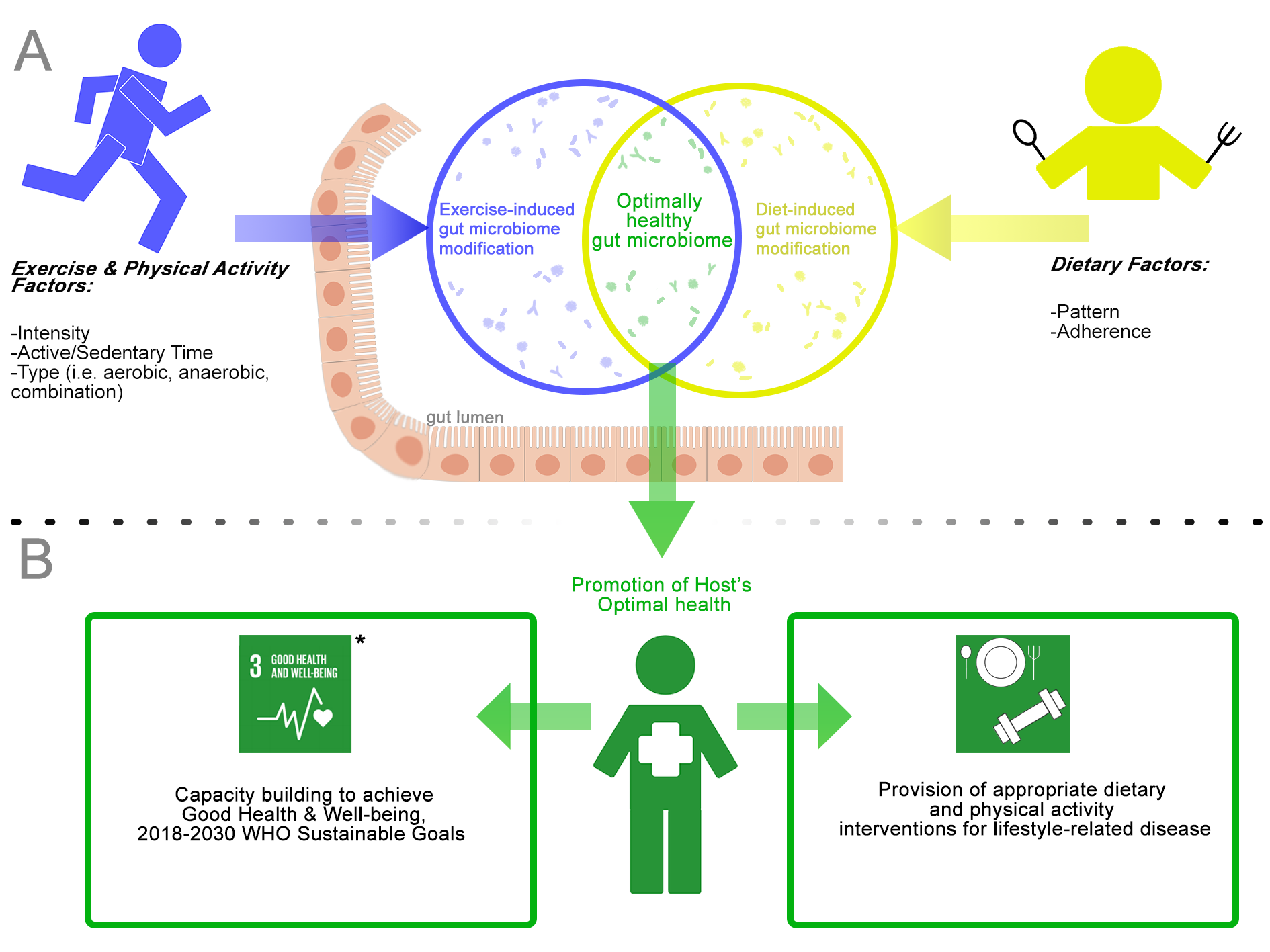VOLUME 14 NUMBER 2 (July to December 2021)

SciEnggJ. 2021 14 (2) 267-287
available online: November 30, 2021
*Corresponding author
Email Address: mpbalolong@up.edu.ph
Date received: May 10, 2021
Date revised: September 2, 2021
Date accepted: November 20, 2021
REVIEW
The Gut Potential: exploring the modulatory effects of exercise and diet on the structure of the gut microbiota
John Guiller P. Realin1, Mia Beatriz C. Amoranto2, and Marilen Parungao Balolong*,2
1Department of Physical Education, College of Arts and Sciences,
University of the Philippines Manila, Philippines
2Applied Microbiology for Health and Environment Research Group
(AMHERG) and Department of Biology, College of Arts and Sciences,
University of the Philippines Manila, Philippines
University of the Philippines Manila, Philippines
2Applied Microbiology for Health and Environment Research Group
(AMHERG) and Department of Biology, College of Arts and Sciences,
University of the Philippines Manila, Philippines
Microbiomes can shape the health status of an individual as certain microbiome profiles are associated with positive or negative health attributes. Promotion of a proper diet has been always essential in achieving good health and well-being. Consumption of certain foods has been known to directly affect the composition of the gut microbiome. A healthy diet promotes beneficial microorganisms that also foster host health. However, another factor that contributes to overall health and well-being is exercise and physical activity. Exercise and physical activity are associated with good health and wellness outcomes. Recent studies have also shown that exercise affects the gut microbiome composition but the contribution of how exercise shapes the gut microbiota is still limited. Dietary recommendations are generally recommended in conjunction with exercise for individuals with lifestyle-related disease. While both diet and exercise work using different pathways to induce health changes, they may also help identify certain microorganisms that may advance host health. In this narrative review, we described the effects of exercise and dietary interventions in modulating the gut microbiota. We found that exercise interventions promote beneficial microorganisms, while dietary interventions promote microorganisms that would likely adapt in a certain dietary composition. The results prompt the identification of a healthy gut microbiome profile as a recommendation for further research endeavors. Moreover, we discussed the potential benefits of exercise and diet as interventions to promote community health and well-being, especially in the Philippines.
© 2024 SciEnggJ
Philippine-American Academy of Science and Engineering